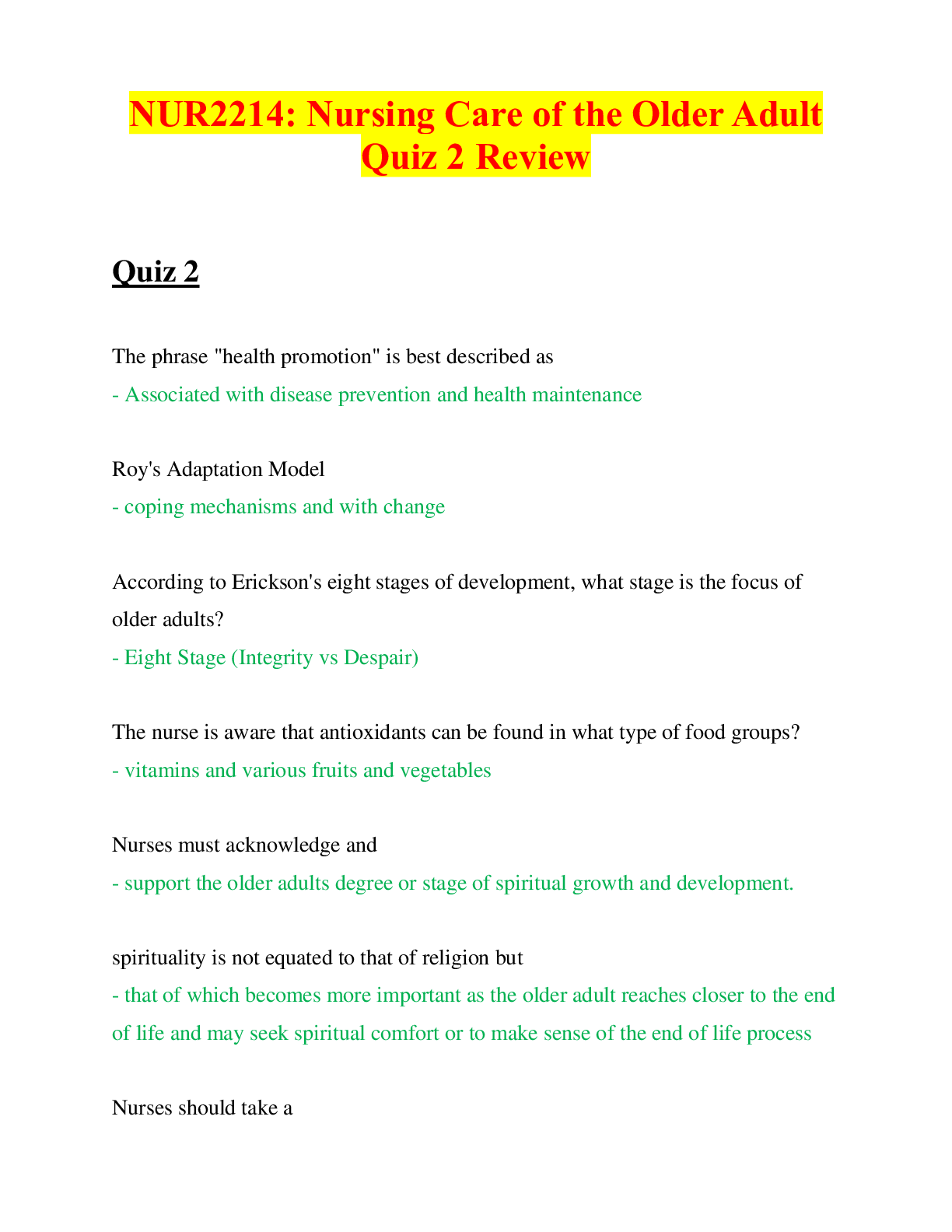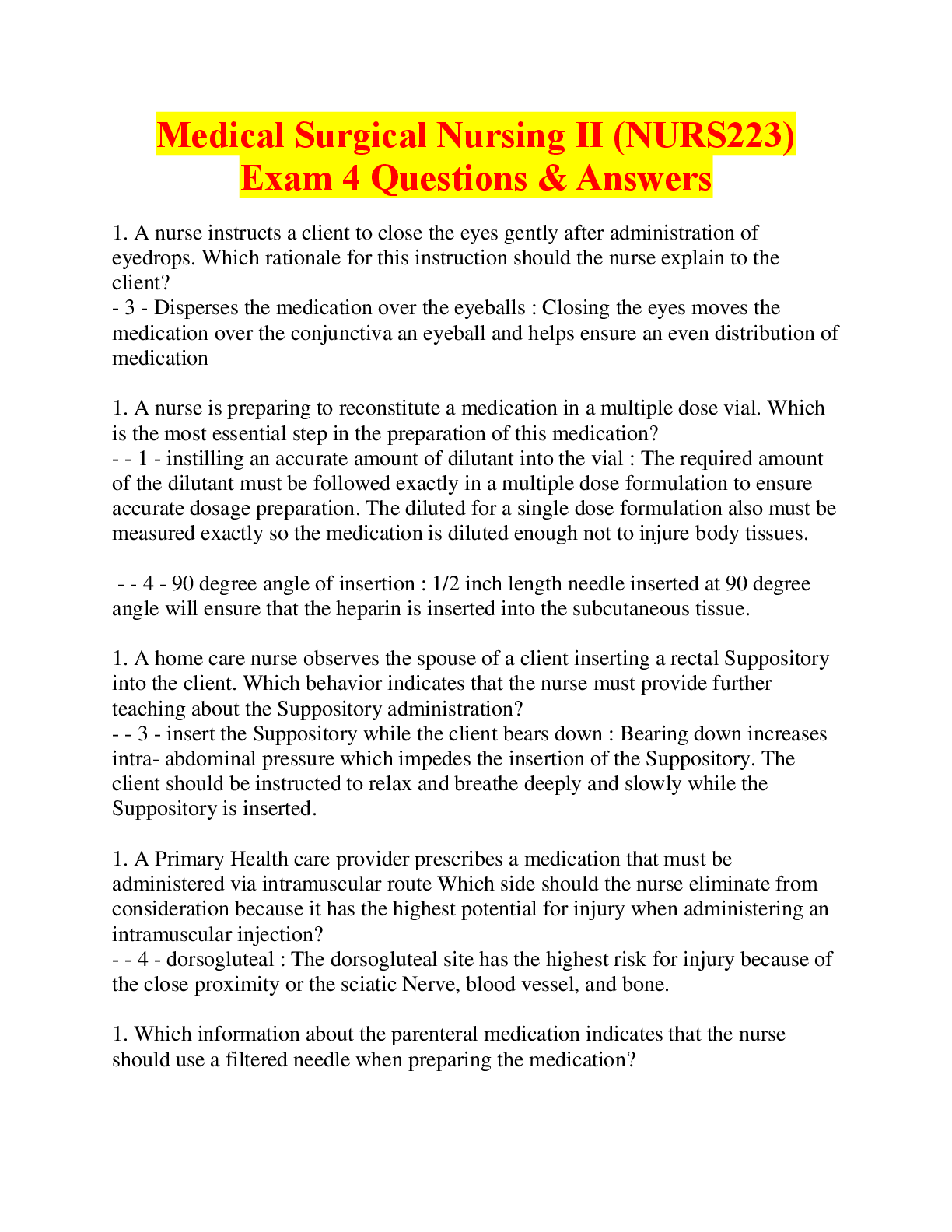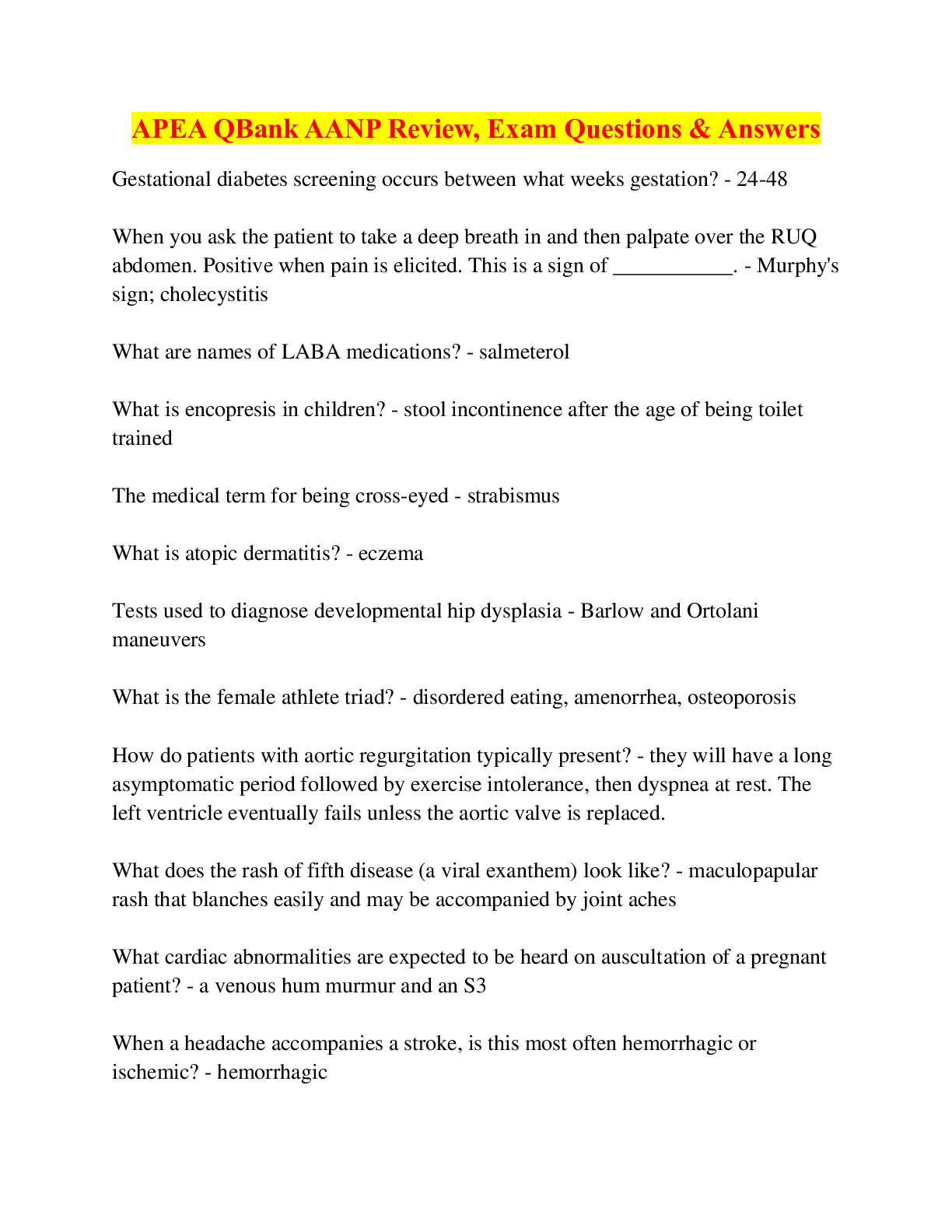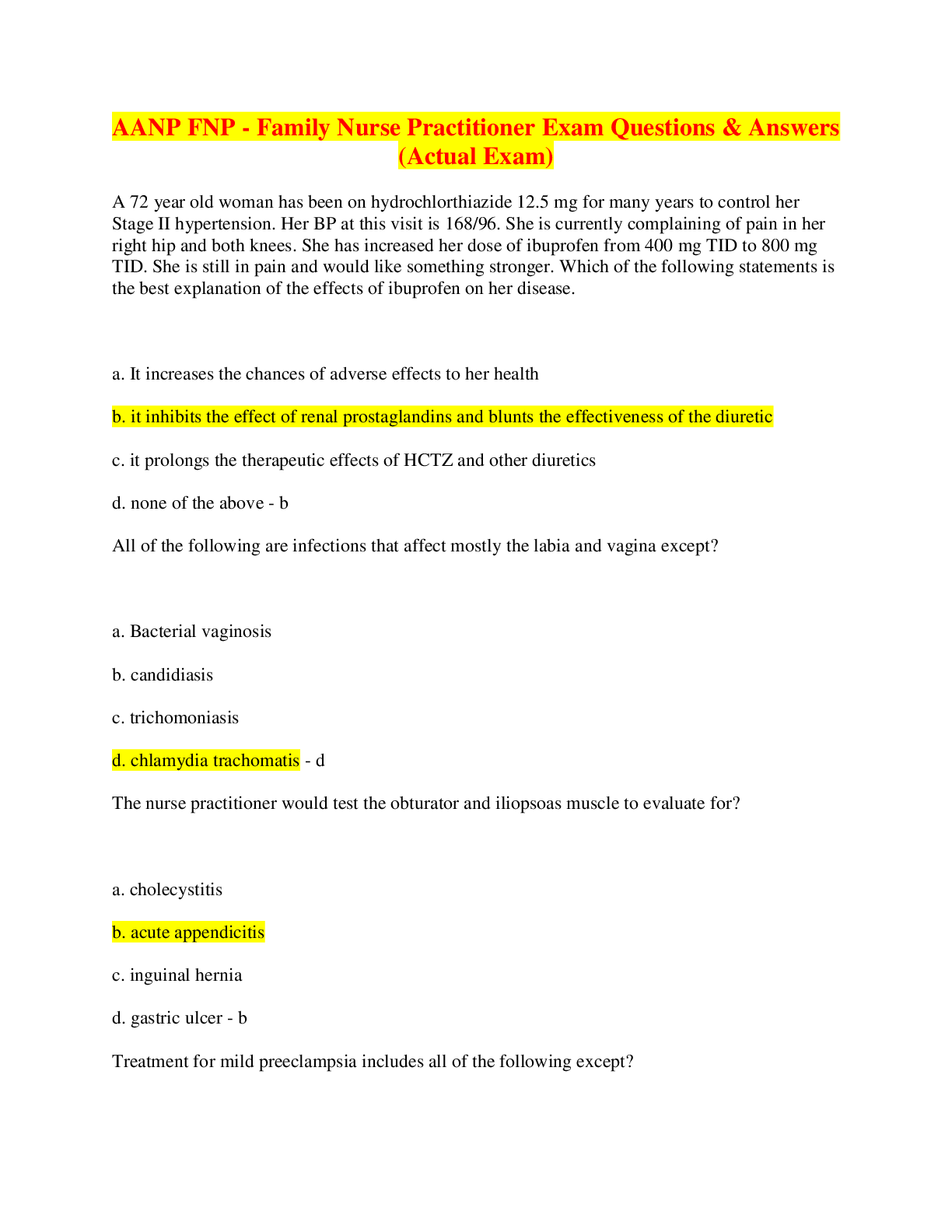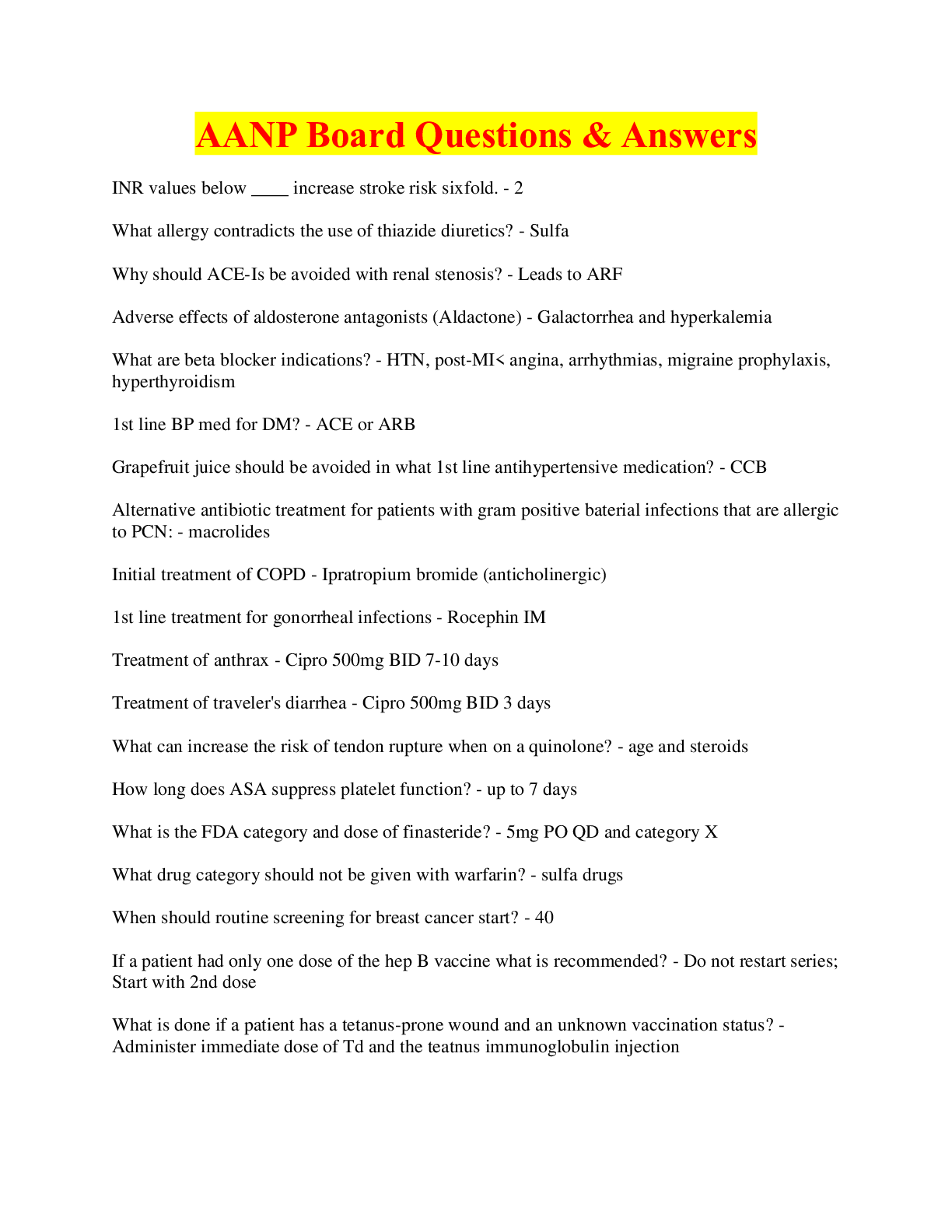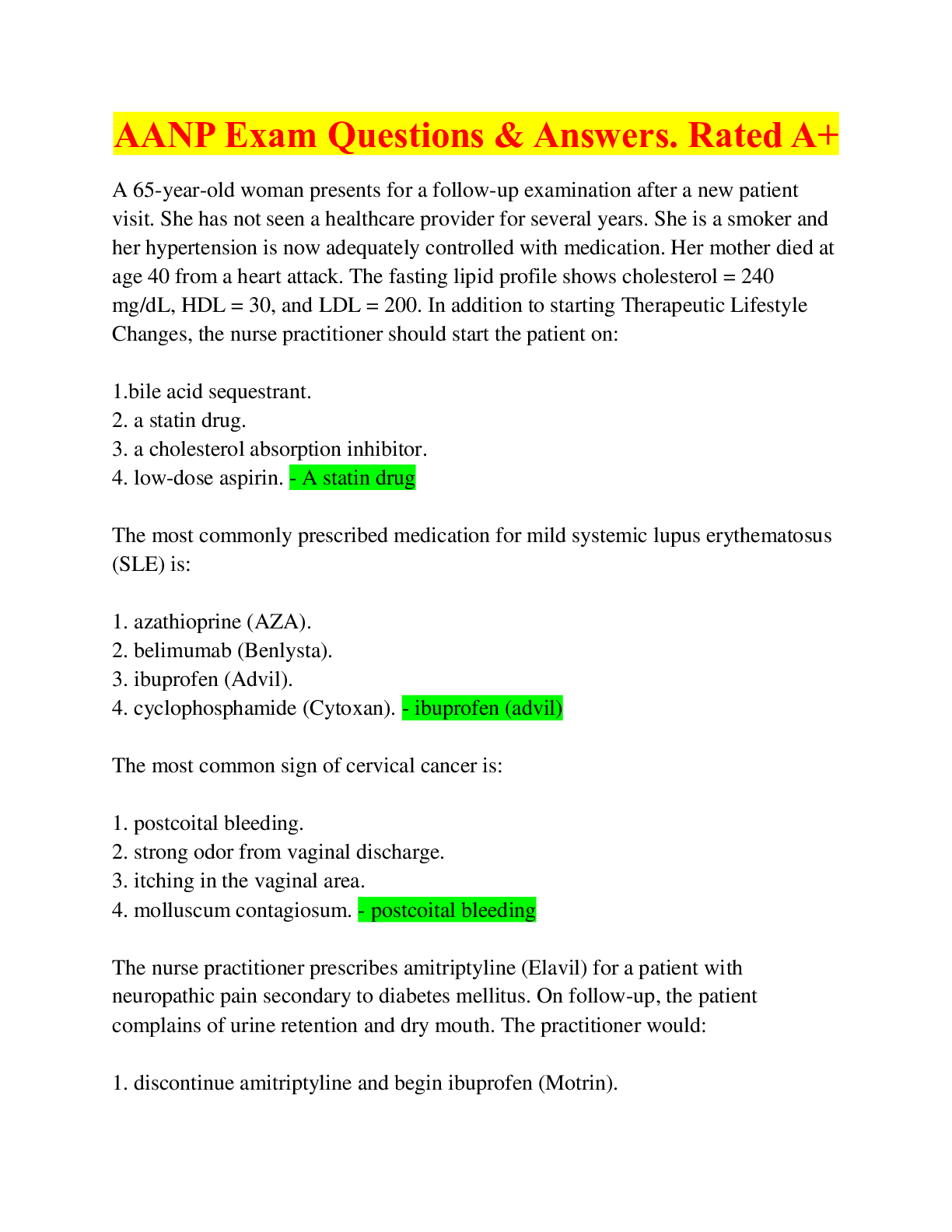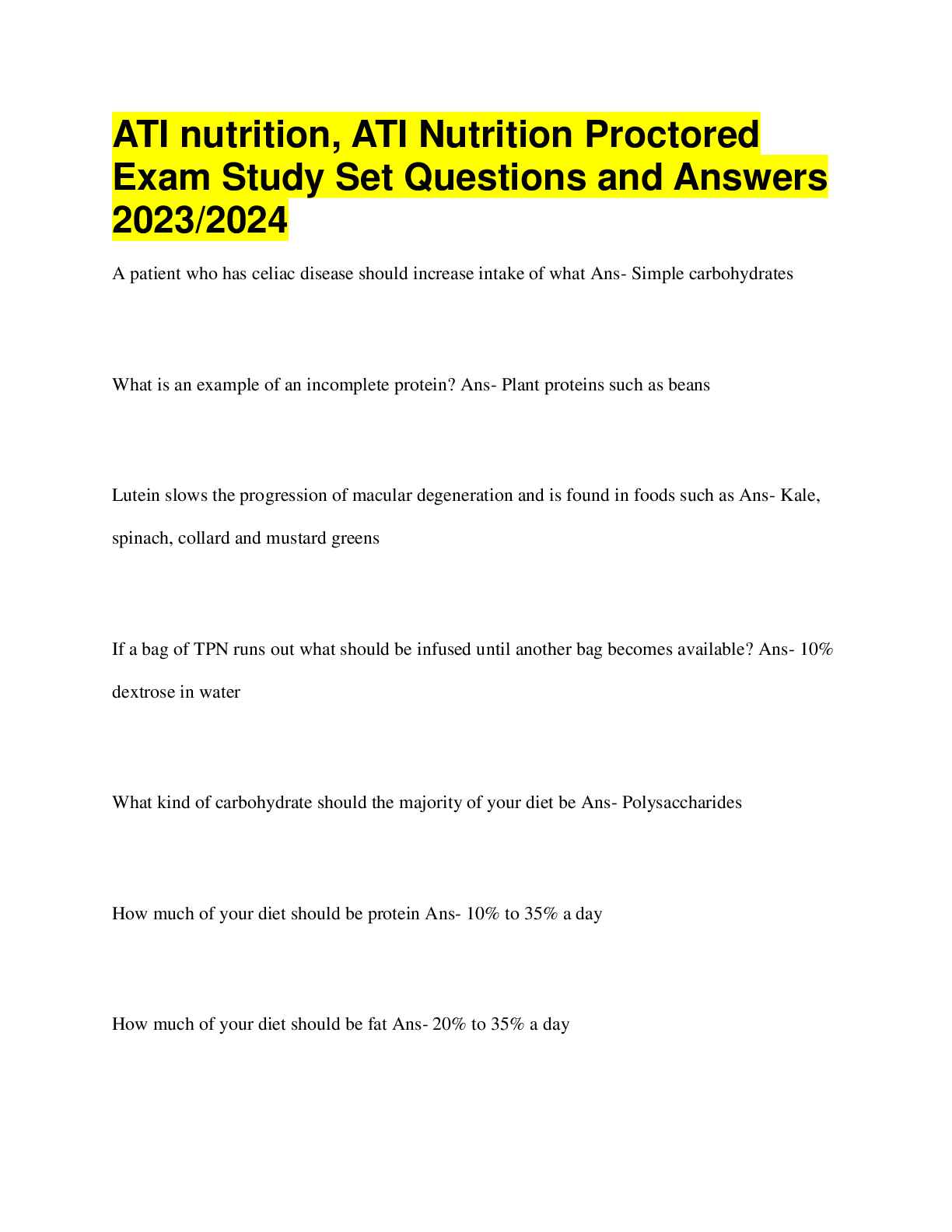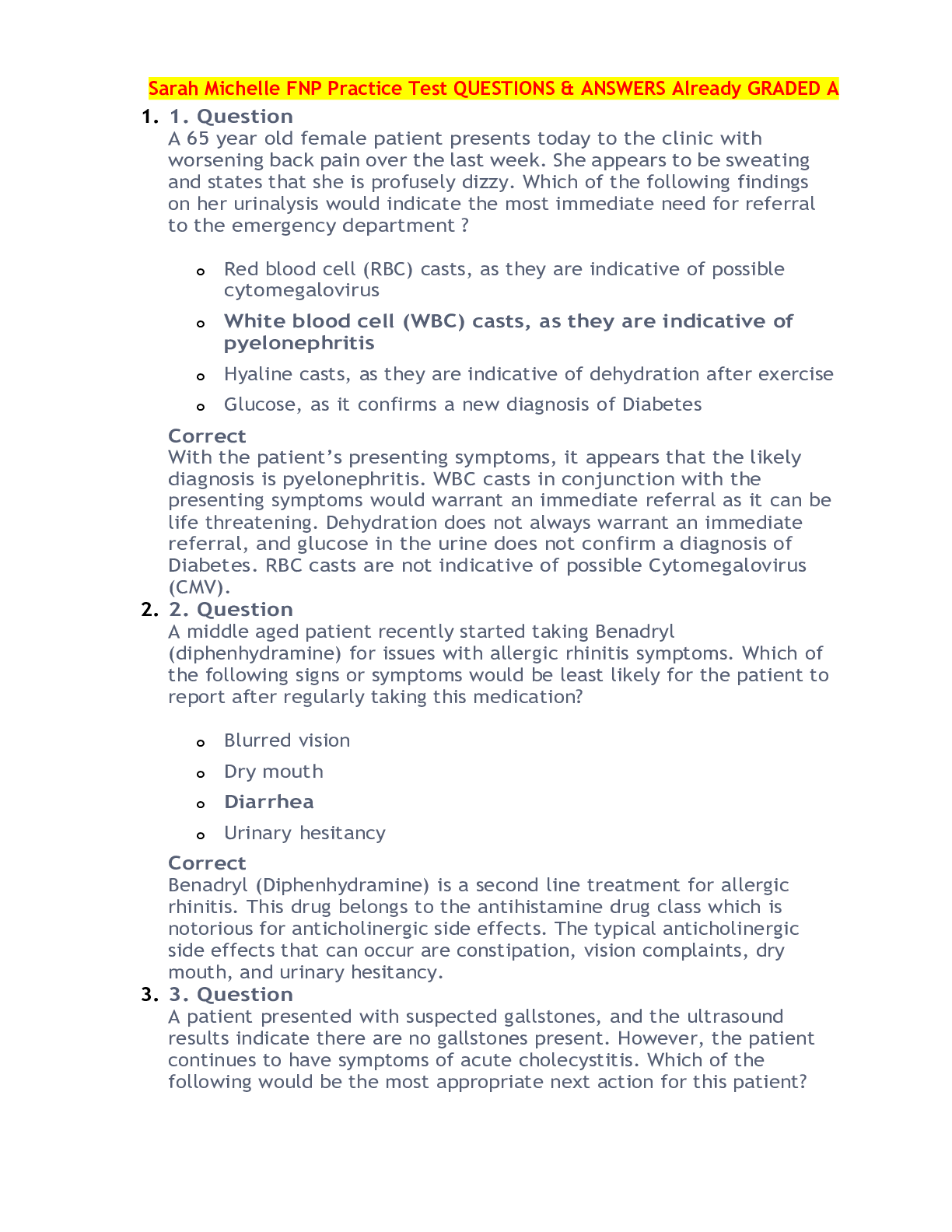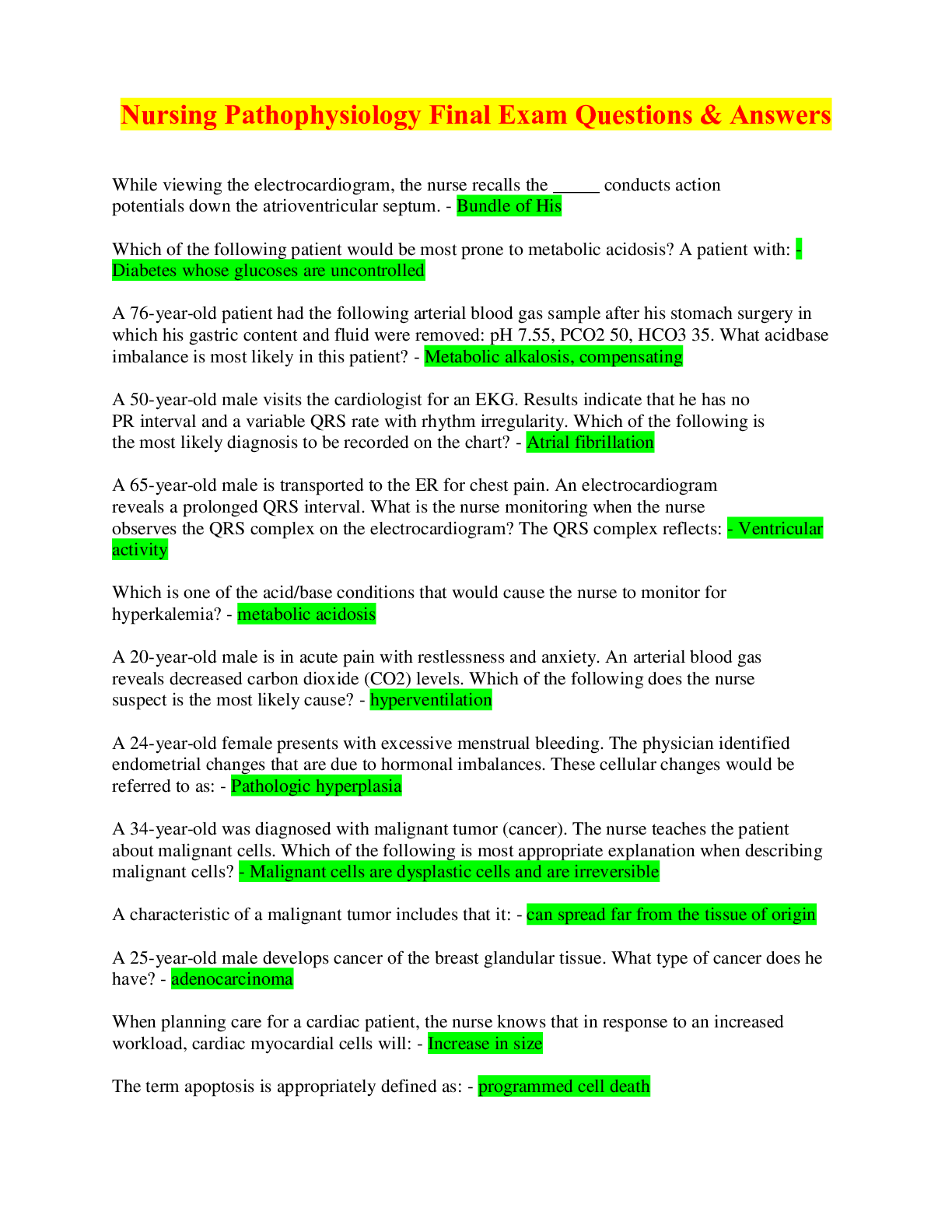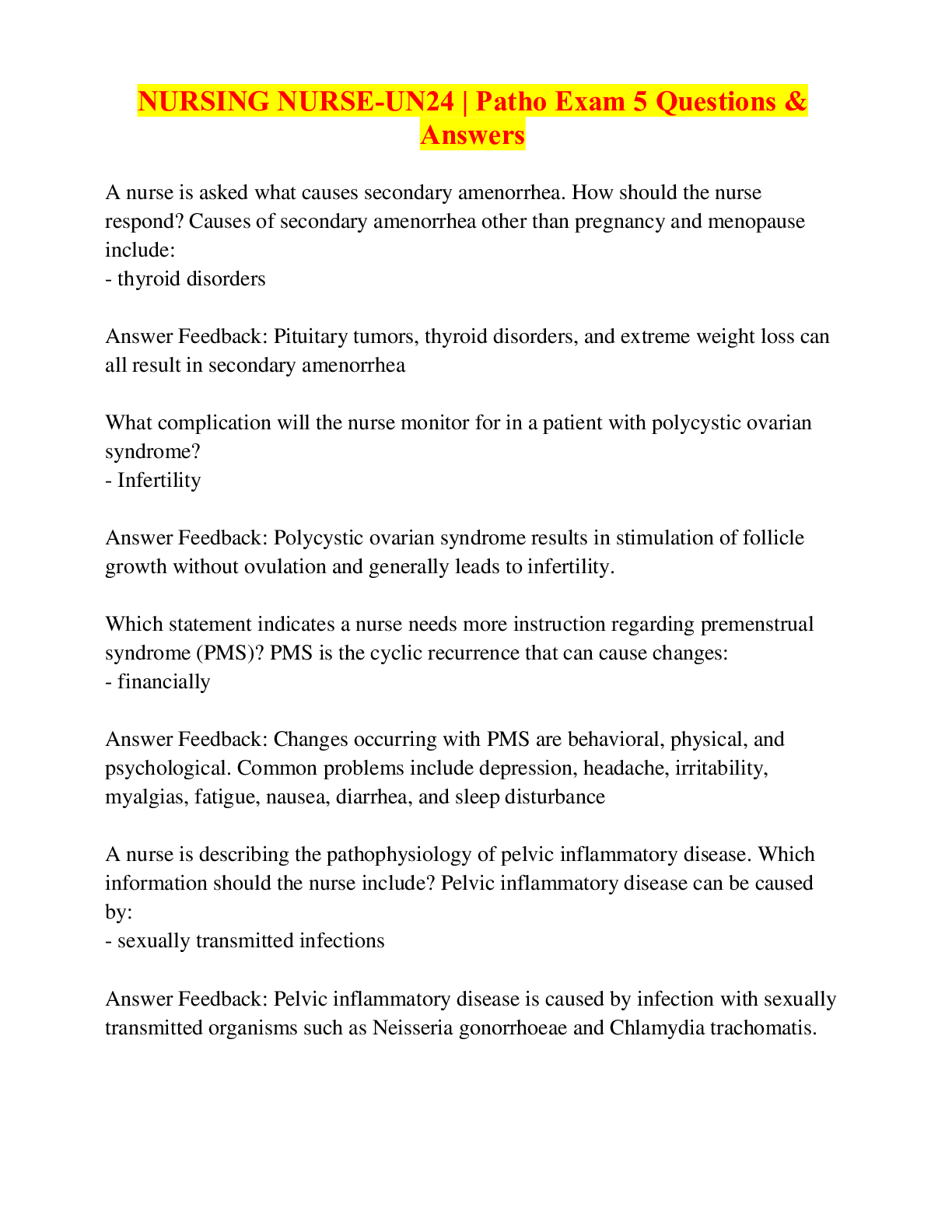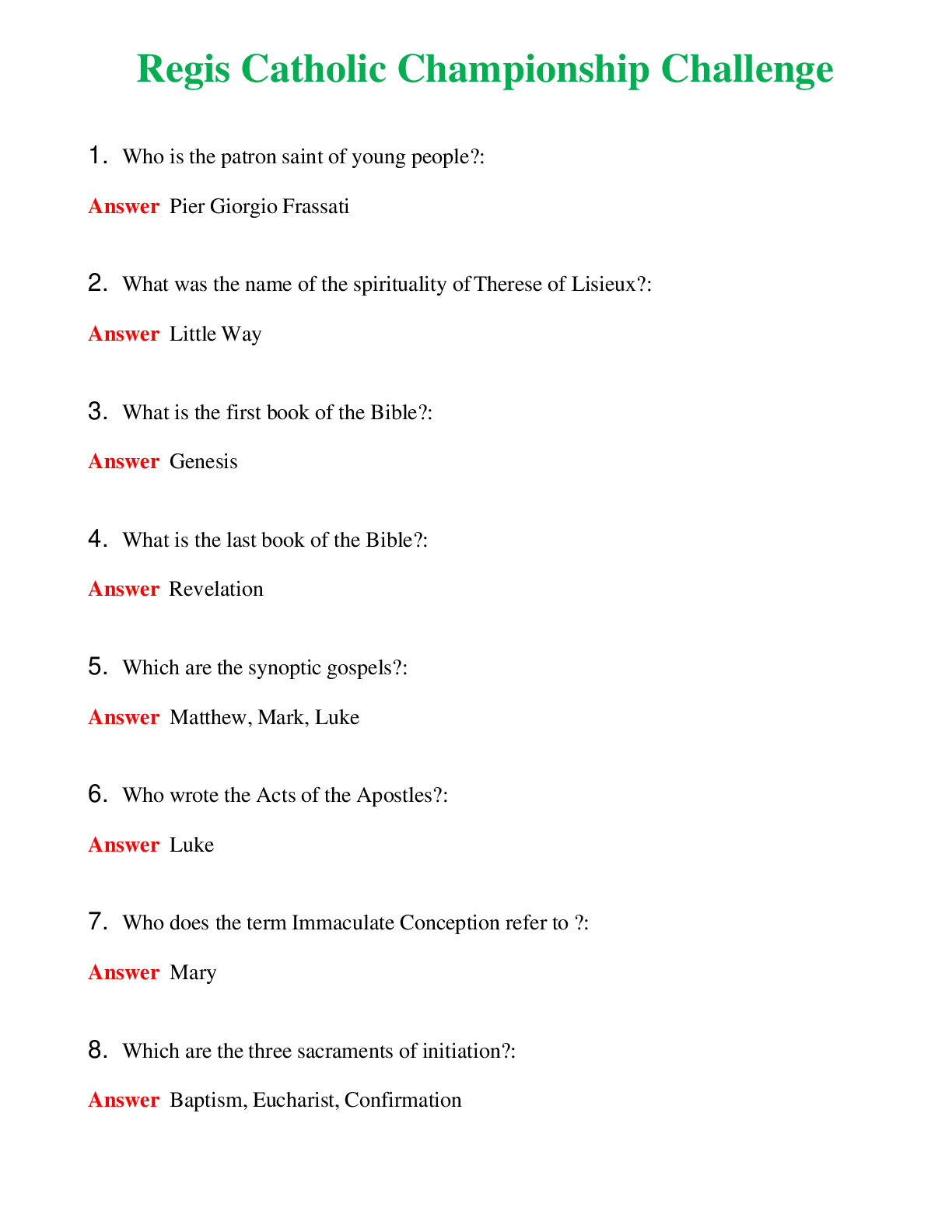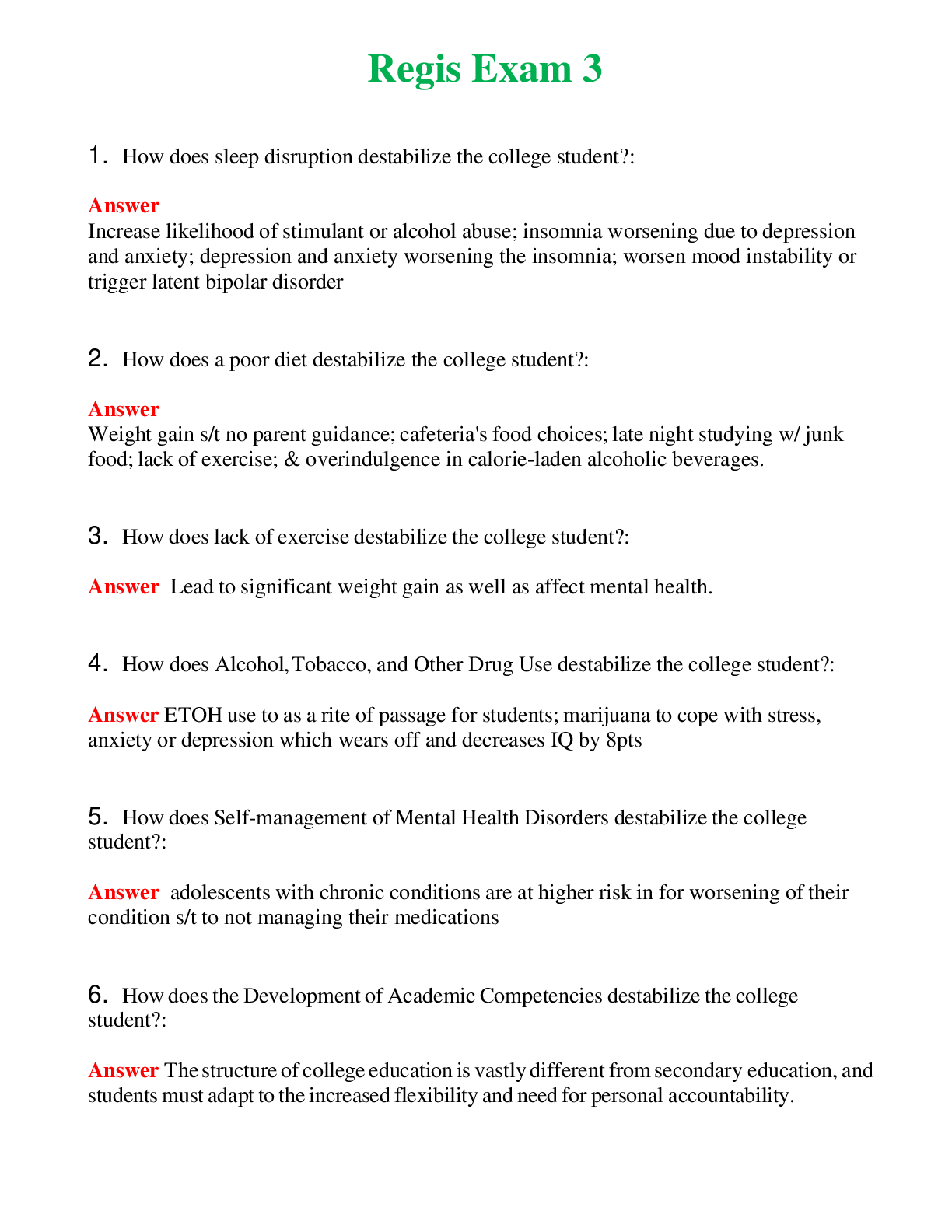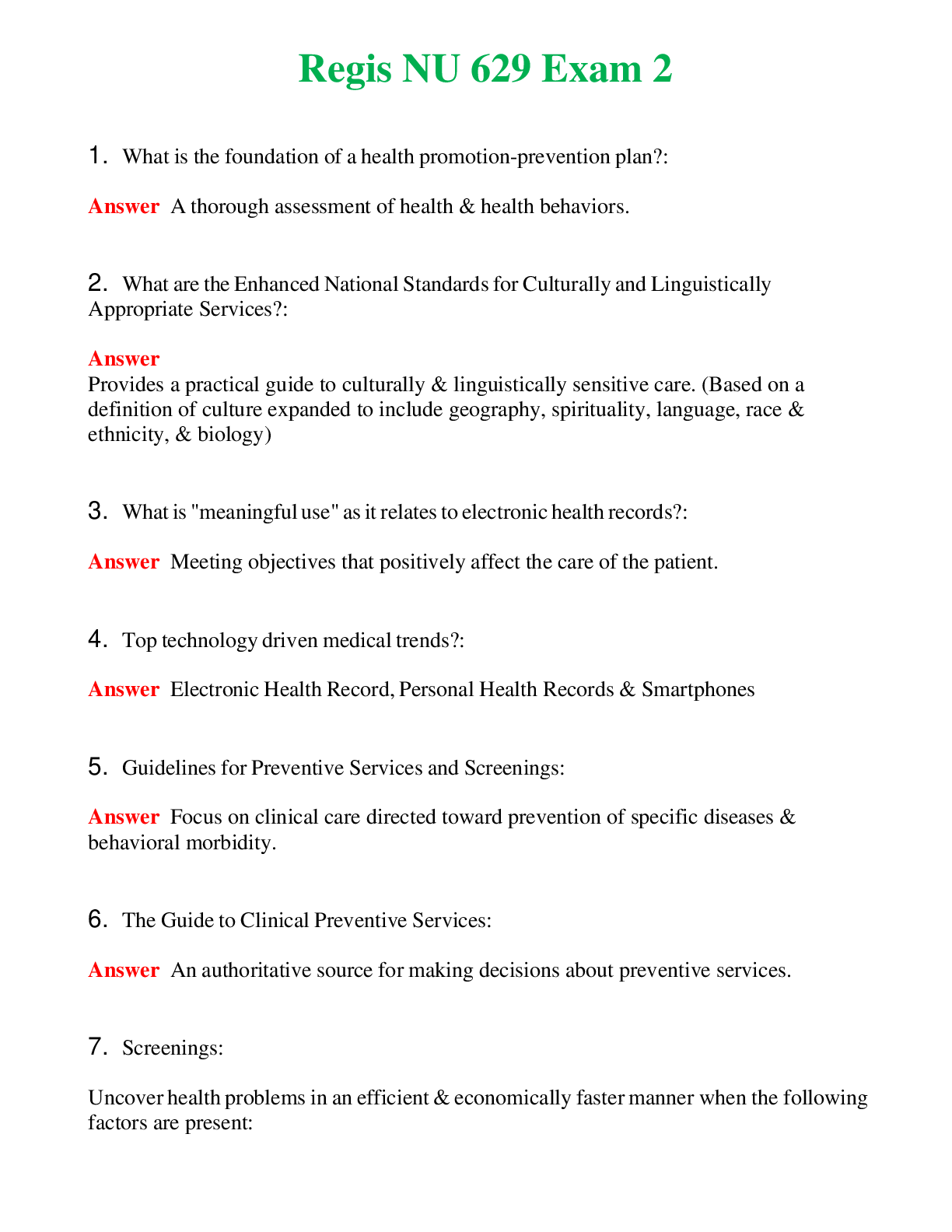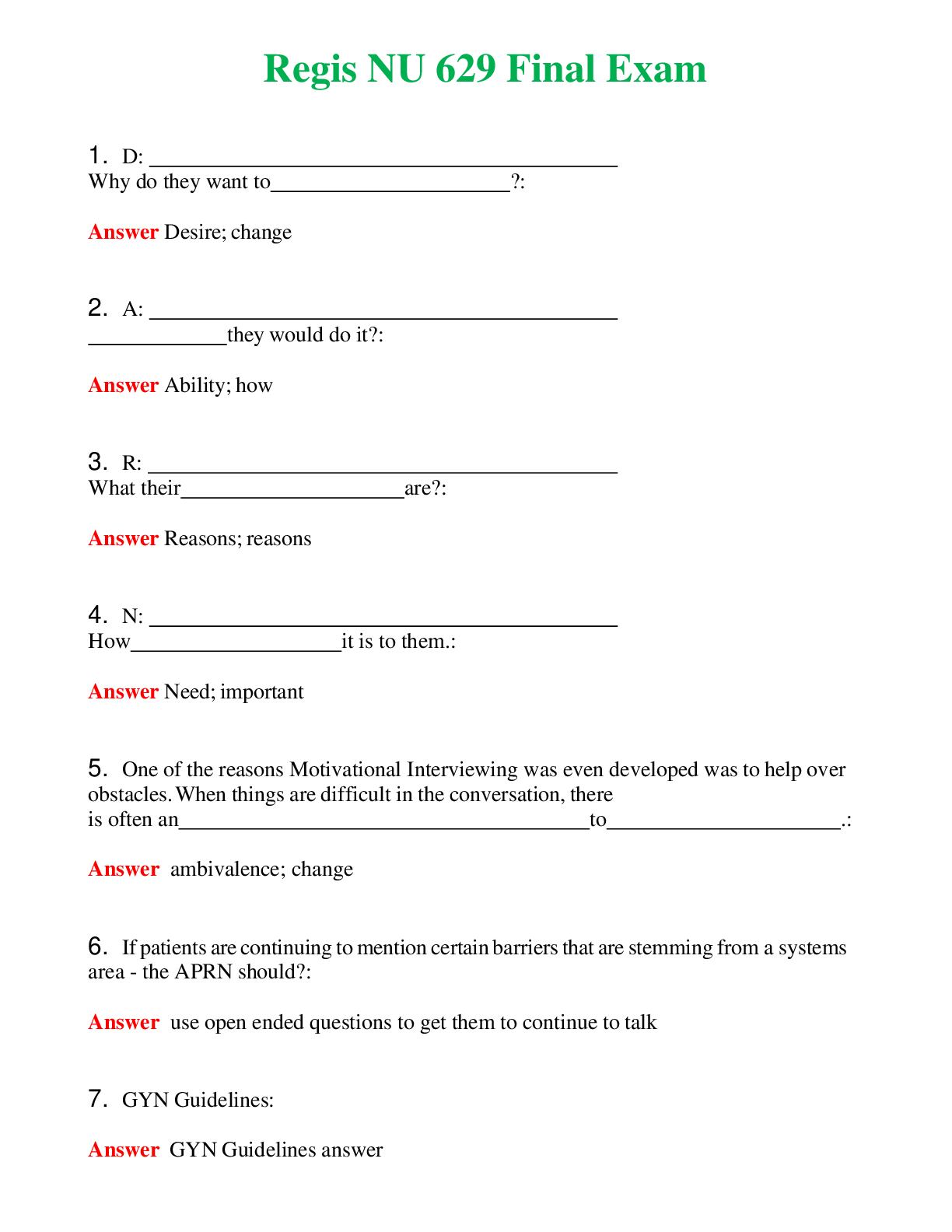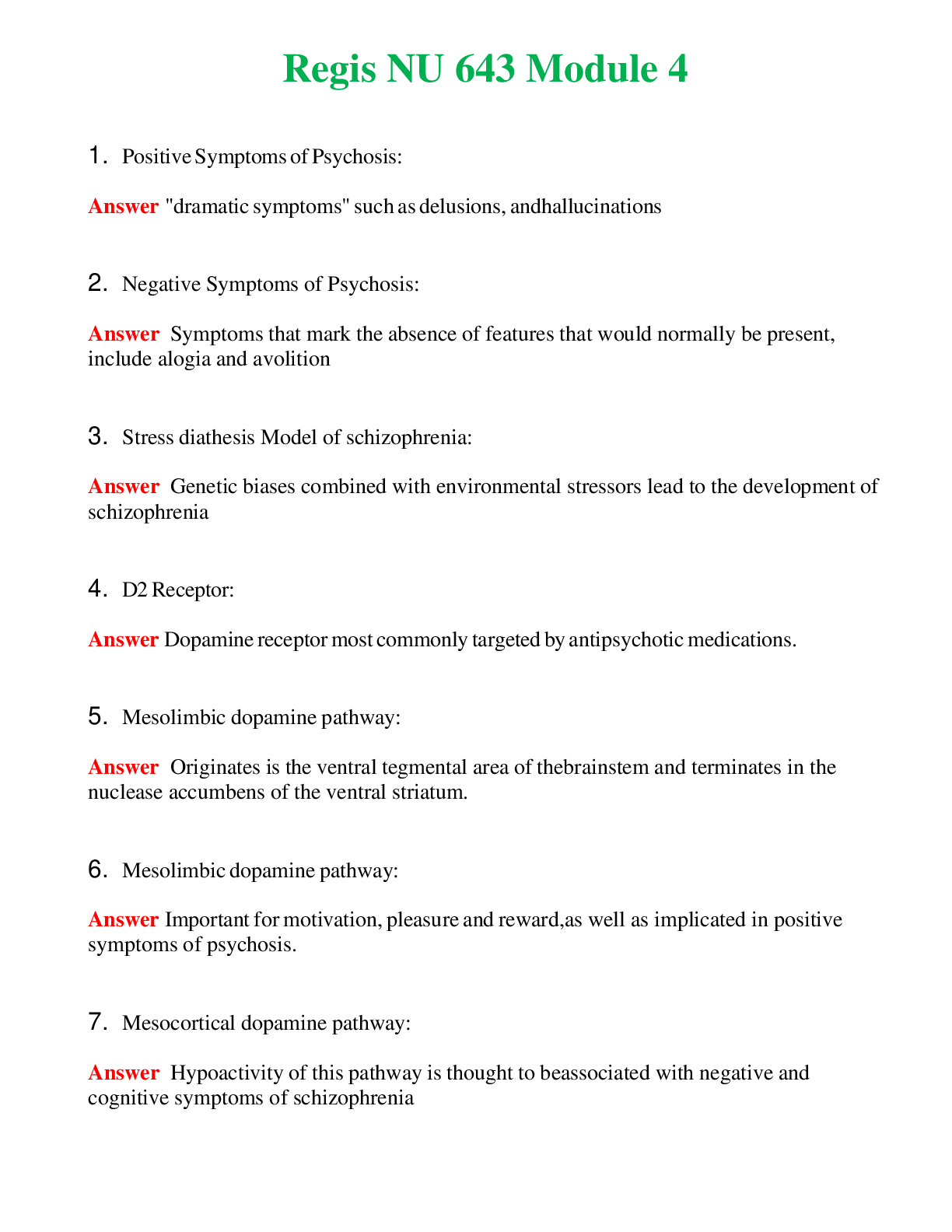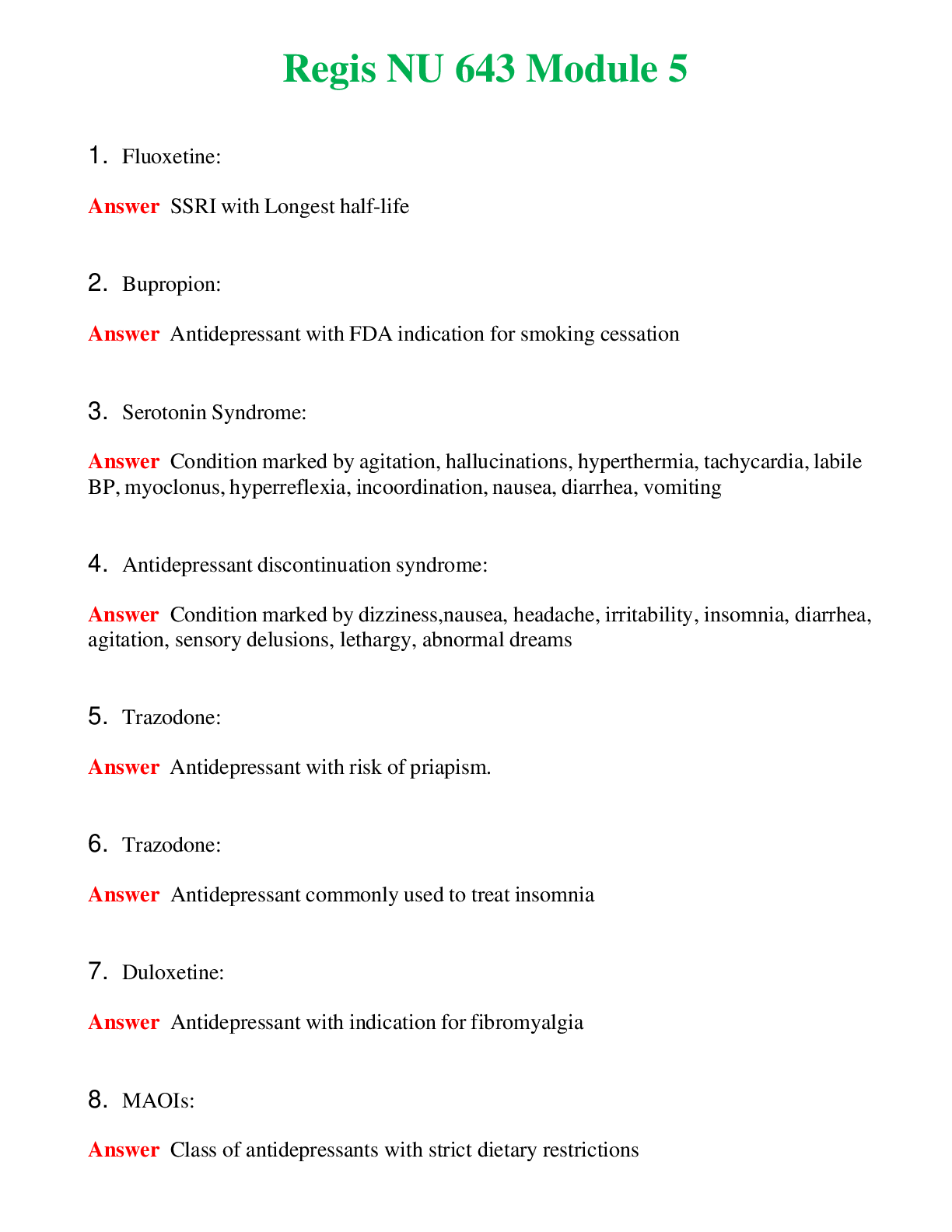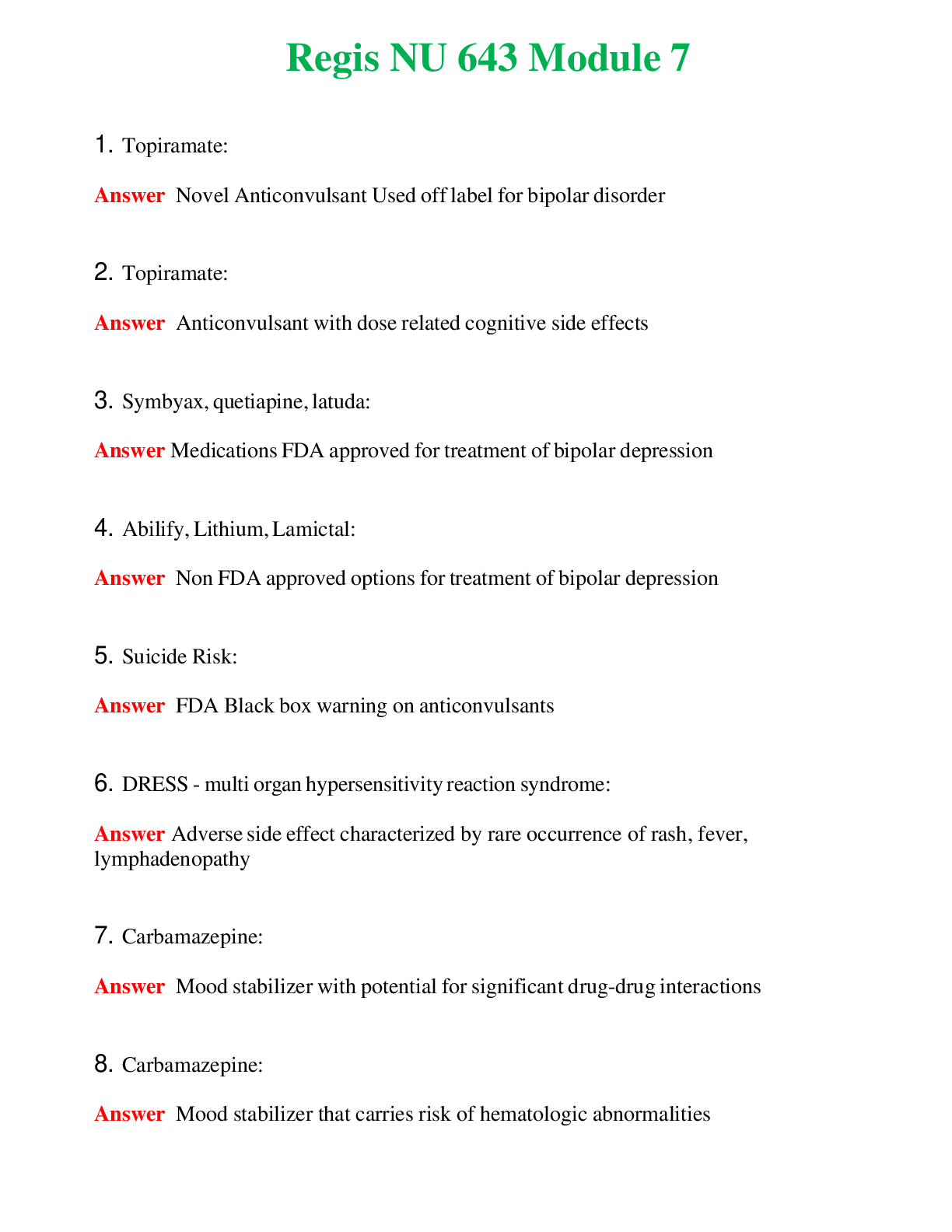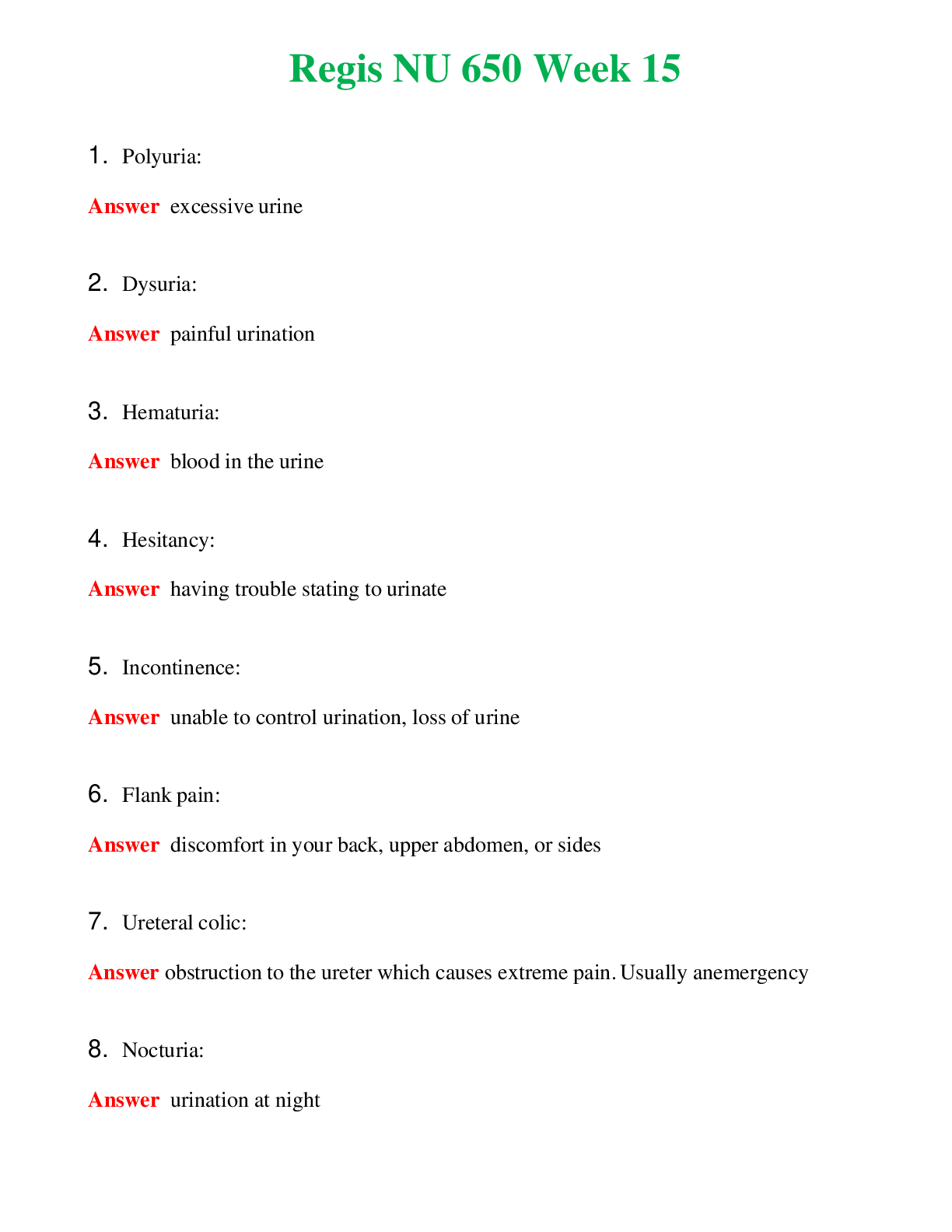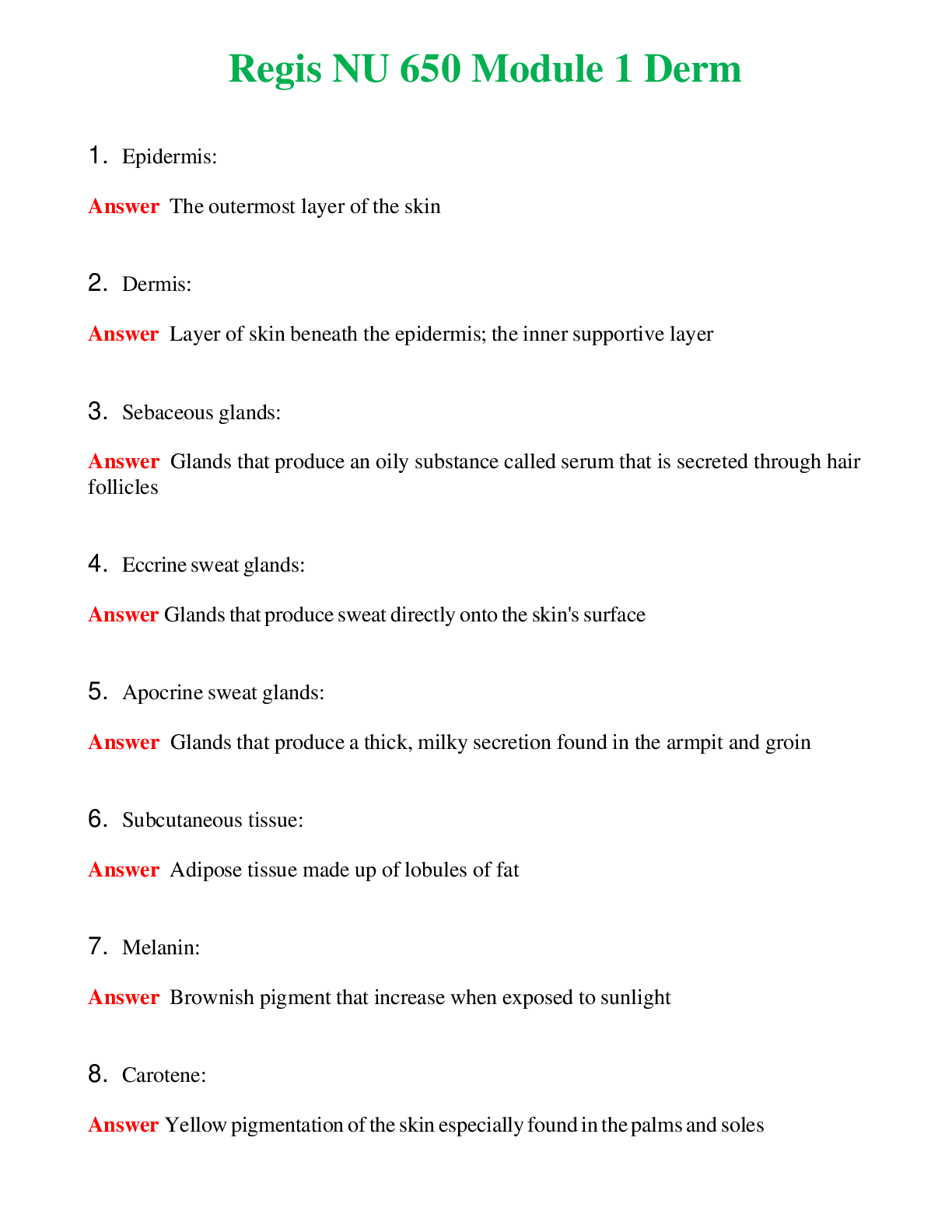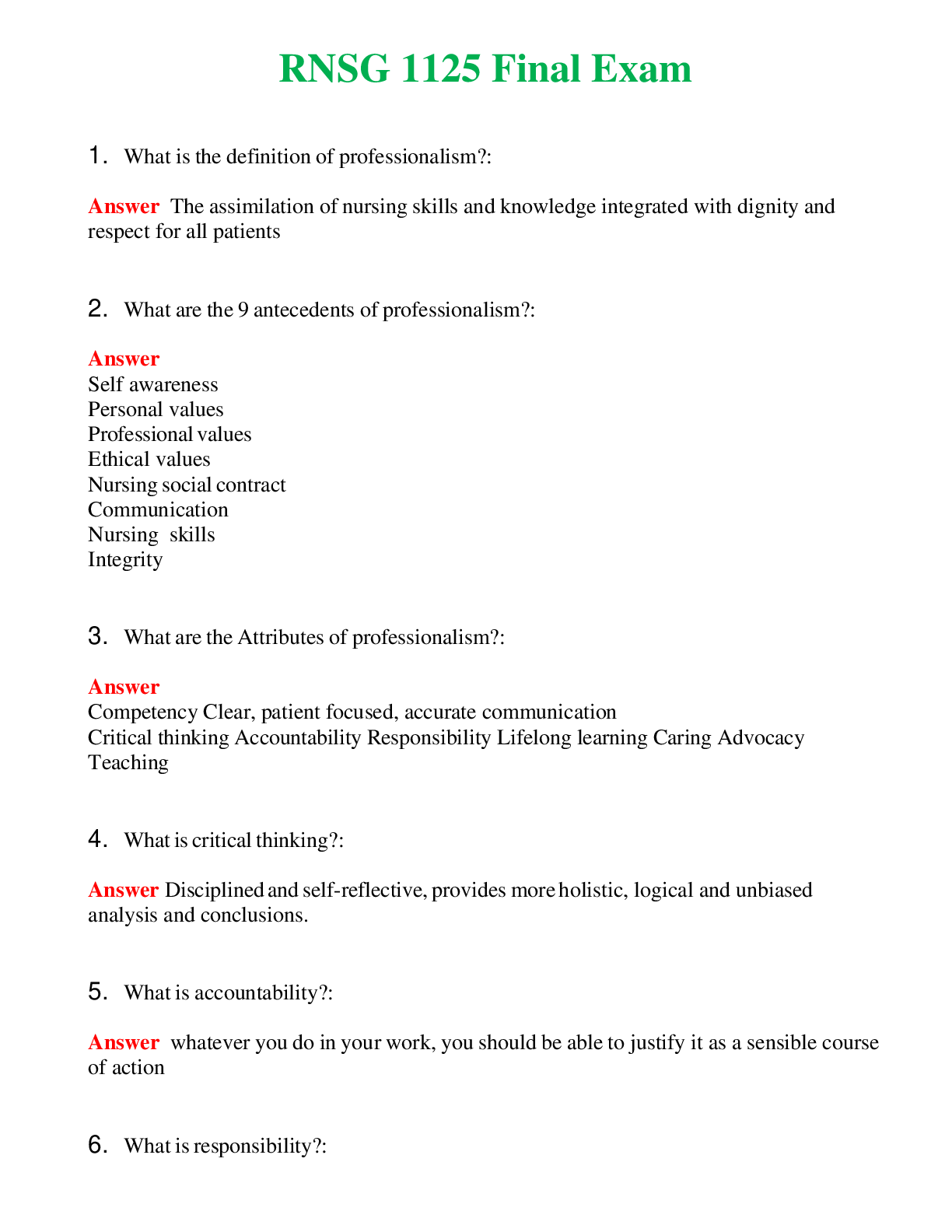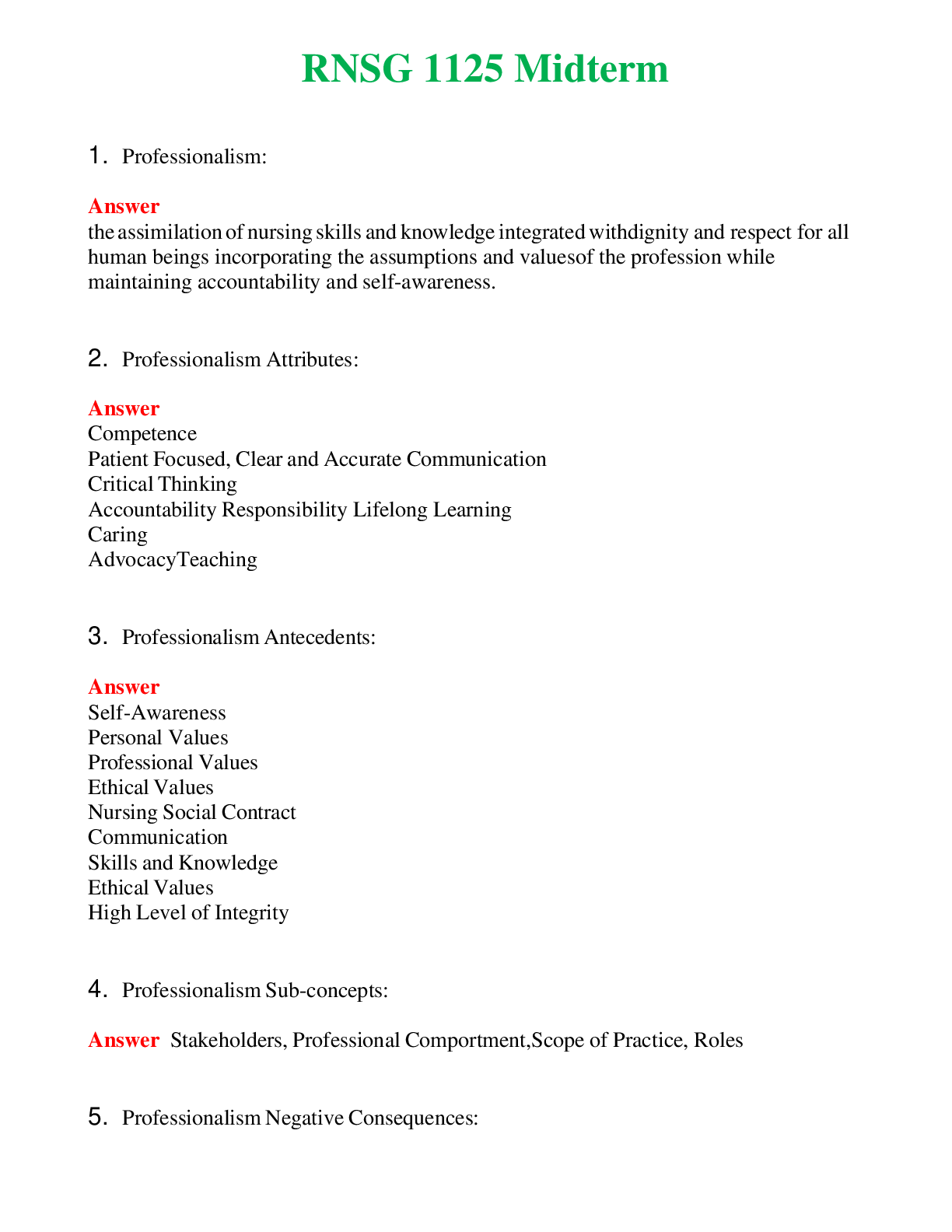Alterations in Immunity and Inflammation Exam Questions & Answers
Document Content and Description Below
Alterations in Immunity and Inflammation Exam Questions & Answers-Hypersensitivity is best defined as a(an): a. Disturbance in the immunologic tolerance of self-antigens b. Immunologic reaction of ... one person to the tissue of another person c. Altered immunologic response to an antigen that results in disease d. Undetectable immune response in the presence of antigens - ANS: C Hypersensitivity is an altered immunologic response to an antigen that results in disease or damage to the host. The other options are not accurate definitions of hypersensitivity. A hypersensitivity reaction that produces an allergic response is called: a. Hemolytic shock b. Anaphylaxis c. Necrotizing vasculitis d. Systemic erythematosus - ANS: B Examples of systemic anaphylaxis are allergic reactions to beestings, peanuts, and fish. The other options are not accurate examples of hypersensitivity. The common hay fever allergy is expressed through a reaction that is mediated by which class of immunoglobulins? a. IgE b. IgG c. IgM d. T cells - ANS: A Type I reactions are mediated by antigen-specific IgE and the products of tissue mast cells (see Figure 9-1). The most common allergies (e.g., pollen allergies) are type I reactions. In addition, most type I reactions occur against environmental antigens and are therefore allergic. The other options do not accurately identify the mediation factor related to hay fever. Which type of antibody is involved in type I hypersensitivity reaction? a. IgA b. IgE c. IgG d. IgM - ANS: B Type I reactions are only mediated by antigen-specific IgE and the products of tissue mast cells (see Figure 9-1). Blood transfusion reactions are an example of: a. Autoimmunity b. Alloimmunity c. Homoimmunity d. Hypersensitivity - ANS: B Only alloimmunity (also termed isoimmunity) occurs when the immune system of one individual produces an immunologic reaction against tissues of another individual. During an IgE-mediated hypersensitivity reaction, which leukocyte is activated? a. Neutrophils b. Monocytes c. Eosinophils d. T lymphocytes - ANS: C Of the options provided, only eosinophils are activated during IgE-mediated hypersensitivity reactions. During an IgE-mediated hypersensitivity reaction, what causes bronchospasm? a. Bronchial edema caused by the chemotactic factor of anaphylaxis b. Bronchial edema caused by binding of the cytotropic antibody c. Smooth muscle contraction caused by histamine bound to H1 receptors d. Smooth muscle contraction caused by histamine bound to H2 receptors - ANS: C During an IgE-mediated hypersensitivity reaction, only smooth muscle contraction caused by histamine bound to H1 receptors results in bronchospasms. [Show More]
Last updated: 1 year ago
Preview 4 out of 15 pages

Loading document previews ...
Buy this document to get the full access instantly
Instant Download Access after purchase
Buy NowInstant download
We Accept:

Reviews( 0 )
$12.50
Can't find what you want? Try our AI powered Search
Document information
Connected school, study & course
About the document
Uploaded On
Nov 01, 2024
Number of pages
15
Written in
All
Additional information
This document has been written for:
Uploaded
Nov 01, 2024
Downloads
0
Views
45


